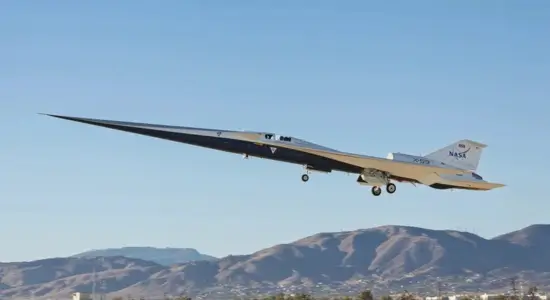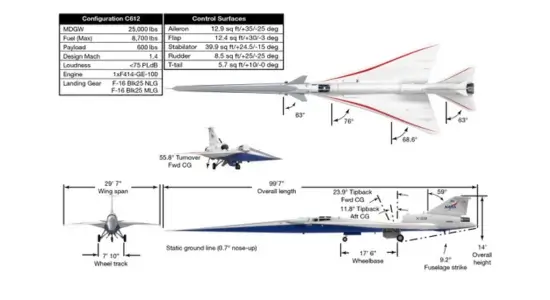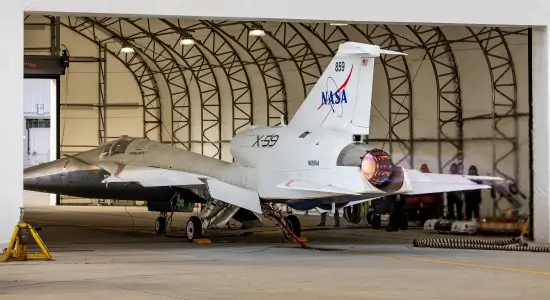The Silence of Speed: NASA’s X-59 Quiet Supersonic Jet Finally Takes Flight
Remember the Concorde? It was fast, glamorous, and loud—really loud. That deafening boom every time it broke the sound barrier is precisely why commercial supersonic travel over land has been banned for decades. Well, folks, it’s time to update the history books. NASA, in partnership with Lockheed Martin’s legendary Skunk Works, has successfully completed the maiden flight of their experimental X-59 QueSST—the Quiet Supersonic Jet designed to turn that window-rattling shockwave into something no louder than a car door closing.

The aviation world let out a collective, well, thump of excitement when the wildly elongated, needle-nosed aircraft finally lifted off from Palmdale Regional Airport in California. This wasn’t just a routine test; it was the first baby step in a mission to tear down a half-century-old noise regulation and usher in an era where you can fly from New York to London in three hours without annoying everyone below.
More Than Just a Pointy Nose: The X-59’s Astounding Dimensions
While the concept of a quiet sonic thump is mind-bending, the X-59’s physical presence is equally impressive, if not a little quirky. This isn’t your average fighter jet. Stretched out to an overall length of 99 feet 7 inches, the aircraft is almost as long as a Boeing 737, but with a drastically narrower wingspan of just 29 feet 7 inches. This elongated, slender profile is key to its “quiet” mission. It stands at a modest 14 feet in height (from the ground to the top of its distinctive T-tail). For perspective, while its engine is related to the F-18 Super Hornet’s, the X-59’s frame is a unique beast, carrying up to 8,700 pounds of fuel and a payload of 600 pounds, all while boasting a maximum design gross weight (MDGW) of 25,000 pounds. Its specific geometry, especially that incredibly long nose, isn’t just for show; it’s a meticulously engineered design choice that dictates how those sound waves behave.

Wait, How Do You Muffle a Sonic Boom?
A regular sonic boom is caused by a massive pressure change that occurs when an aircraft accelerates past the speed of sound (Mach 1). The plane generates two shockwaves—one from the nose and one from the tail—that merge into a single, thunderous explosion of sound when they hit the ground. It’s disruptive, to say the least.
The X-59 is designed to hack that physics problem using sheer, beautiful, and slightly bizarre aerodynamics.
- The Nose Job: Look at the X-59. It’s 99.7 feet long, but the needle-like nosecone takes up a staggering 38 feet of that length! This radical shape spreads out the shockwaves, preventing them from merging into one giant blast.
- The Vision Problem: Because the nose is so long and pointed, the pilot has zero forward-facing visibility. The solution? An augmented reality system called the External Vision System (XVS), which uses a 4K camera to stream the forward view onto a cockpit display. Talk about flying by screen!
- The Engine Placement: The single General Electric F414-GE-100 engine (the same kind used on F/A-18 Super Hornets, but modified) is mounted on the top of the aircraft. This placement helps to further manage the shockwave distribution.
The goal isn’t just to make it quieter; it’s to reduce the sound from 105 perceived decibels (PLdB)—a thunderclap—down to a target of 75 PLdB, which engineers liken to the faint sound of a distant car door closing. It’s a literal whisper in the wind compared to the Concorde’s roar.

The Long Game: What Happens Next?
This initial flight was deliberately subsonic—a quick hour-long systems check to ensure the Frankenstein-like jet (it uses landing gear from an F-16 and a seat from a T-38!) actually handles as intended. It did.
But the real work begins now. The X-59, which is designed to cruise at Mach 1.4 (about 925 mph) at an altitude of 55,000 feet, will enter two critical phases:
- Acoustic Validation: Proving the quiet boom technology works in real-world conditions.
- Community Overflights: The plane will fly over selected U.S. communities. NASA will then survey residents on the ground, asking them what they heard (or didn’t hear). This crucial data is what NASA plans to deliver to global aviation regulators to finally get the overland supersonic ban lifted.
If the X-59 succeeds, the entire commercial aerospace industry is poised to take off again, giving birth to a new generation of aircraft that can genuinely cut global travel time in half. This is more than just a jet; it’s a shot at making supersonic flight an everyday reality again.
🧠 Did You Know?
The technology to manage shockwaves isn’t unique to the Quiet Supersonic Jet itself!
- The Original Speed Demon’s Hiccup: While the Concorde was a marvel of engineering, its sonic boom was so disruptive that the U.S. banned its flight over land in 1973. This X-59 mission is essentially an attempt to undo that single, speed-killing regulation.
- Faster Than a Bullet, Smaller Than a Jet: The X-59 is long (about 100 feet), but the fastest self-propelled human-made object to ever travel through the atmosphere—excluding spacecraft—was the Lockheed SR-71 Blackbird, which cruised at Mach 3.2. That’s about 2,193 mph! It used a blend of advanced design and special fuel to withstand the intense heat and drag at that velocity, a challenge the X-59 designers had to manage on a smaller scale.
Want to know more about the weird stuff we’ve sent into the sky? Read about the time a Russian Dog was launched into orbit, or discover the true story behind the mystery of the Bermuda Triangle’s disappearing planes.
ref : nasa , iflscience






